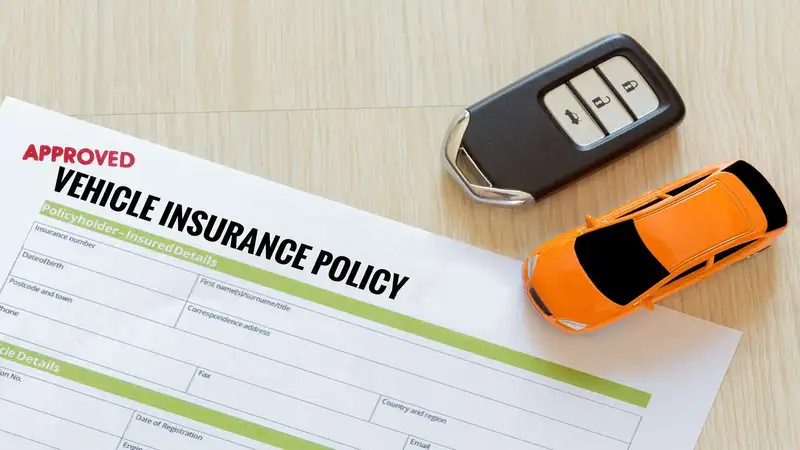Optimising Your Car Insurance: Limits and Providers
Keeping car insurance costs in line doesn’t have to be a complicated ordeal. Understand what you’re buying and make smart choices with this simple guide.

1. Understanding Car Insurance Basics
Car insurance is designed to protect you financially in the event of an accident or theft. Before delving into the details, make everyone on the policy understand the purpose it serves, as well as the different types of coverage available (liability, comprehensive, collision, etc.) and what they cover.
2. Know the Necessities
Each state has its minimum requirements for coverage, often involving liability insurance that covers injuries and damages your vehicle may cause to others. Always ensure that your policy meets or exceeds these requirements to stay on the right side of the law.
3. Customize Your Coverage
Match your coverage to your car's true needs. If you have an older vehicle, it may not be cost-effective to choose comprehensive insurance, while newer, high-value vehicles could benefit extensively from a full coverage policy. Keep in mind that your chosen deductible will play a part in your premiums – a higher deductible usually reduces the overall expense.
4. Deciphering Policy Limits
Policy limits are the maximum amount your insurance will pay out in the event of a claim. They play a crucial role in your protection, so resist the temptation to decrease these limits merely for a cheaper premium. If you can afford it, getting the highest amounts you are comfortable with will offer more cushion in accidents or theft.
For bodily injury liability, higher limits could safeguard personal assets if you’re sued. Property damage has similar reasoning; superb driver or not, accidents do happen, and costs can sky-rocket in a reconstructive heartbreak.
Likewise, understand how your state structures, "no-fault" or ”at-fault," influences your decisions. Seek personalized advice if you’re unsure, as this can dramatically impact coverage requirements.
5. Unpacking Uninsured and Underinsured Motorist Coverage
Unfortunately, not everyone carries enough insurance, risking financial strife for others in the event of an accident. Uninsured and underinsured motorist coverage is, therefore, critical for many, providing that extra layer of security should you encounter such a driver.
6. The Perks of Additional Coverage
Depending on your situation, additional coverages—like rental reimbursement, roadside assistance, or comprehensive coverage—not initially offered on a standard policy might be valuable for your peace of mind.
GAP insurance is something owners of newer or financed cars should consider—this pays the disparity between the insurance payout and what you owe on your vehicle if it's totaled.
7. Establishing a Sustainable Budget
Insurance isn't the place to skimp, but that doesn't mean you shouldn't keep an eye on the budget. Suppose you need to reduce your costs, consider raising your deductibles or explore discounts offered (for example, good driver, multi-car, or student discounts). Learn their prerequisites and maintain eligibility for continued savings.
8. Installing a Telematics Device
Many insurers offer the option of installing a telematics device, which tracks your driving behaviors and can reduce premiums for safe driving. Just be aware of privacy concerns and make sure you’re comfortable with the data sharing involved.
9. Multi-Policy Discounts
Combining your car insurance with other policies at the same insurer may provide you additional savings known as ‘bundling.’ Such multi-policy discounts encourage consumers to centralize their insurance needs for simpler management and possibly find lower rates.
10. Premium Payment Options
Find out if your insurer offers savings for paying premiums annually or semi-annually rather than monthly. Doing so can avoid the convenience fee some charge for monthly processing and add up to substantial savings over time.
11. Choosing Insurance Providers: Factors to Ponder
Ultimately, picking an insurer centers upon three primary factors:
- Price
^ Shop around, getting multiple quotes for similar levels of coverage and fair comparison.
- Service
^ Delve into reviews from current/formal clients and even test the customer support yourself.
- Reliability
^ Investigate financial stability and claims process ease, meaning lesser hassle during stressful situations.
12. Go Beyond the Norm
Don’t restrict yourself to the big names in insurance; regional insurers may give you excellent service and superior rates. Similarly, you should frequently reassess your policy once a year to ensure it's aptly tailored for any changes like moving homes, changes in marital status or diminishing value of your vehicle.
13. You Can’t Overeverstimate Transparency
Communicate honestly about your usage, driving record, and any customizing work added. Not being transparent could nullify your insurance when you need it very.
14. Leverage Technology
Utilize online quote comparison tools for a head-start in research. They help in completing blanket canvassing across various insurers at once, giving you speedy turnarounds in investigative toil.
15. Always Evolve with Life's Changes
Keep in mind, car insurance policies aren’t set in stone. The beauty of adaptable coverage feels undervalued — anytime your life shifts, your car insurance can bend to acquiescently shadow suit.
-
1

Ultimate Feast for the Eyes: Top Cooking Shows Every Foodie Must Watch!
-
2

Maximize the Lifespan of Your New Dental Implants with Expert Care Tips
-
3

Ascending with Ease: The Revolutionary Journey of Stair Lift Technology
-
4

Maximizing Your Walk-In Tub's Lifespan: The Ultimate Guide to Enhanced Performance and Durability
-
5

Unlock Bigger Savings: Master the Art of Using Your Gas Rebate Card!










